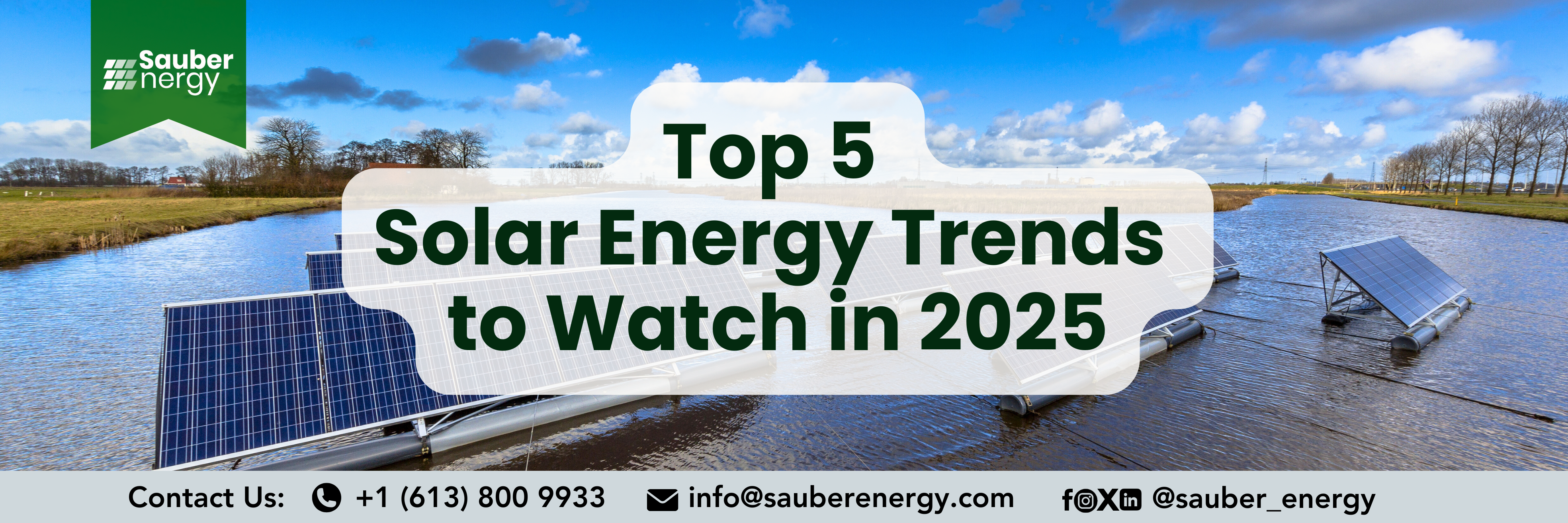As winter approaches, many Canadian homeowners may wonder how their solar energy systems will perform with shorter days, colder temperatures, and increased cloud cover. While solar energy production does decrease in winter, there are several strategies to optimize your system and continue reaping the benefits of solar energy even in the colder months.
Adjust the Angle of your Solar Panels.
One of the most effective ways to maximize solar energy during winter is by adjusting the angle of your solar panels. In the summer, panels are typically set at a lower angle to capture sunlight directly overhead, but in winter, when the sun is lower in the sky, adjusting the panels to a steeper angle can help capture more light. If your system has a tracking mechanism, it will automatically adjust to the optimal angle. For fixed-angle systems, consider having a professional adjust the tilt for better winter performance.
Keep your Panels Free of Snow.
Snow can block sunlight and reduce energy production, so it’s important to keep your panels free of snow. While panels are designed to shed snow, it can still accumulate, especially in areas with heavy snowfalls. Use a soft broom or snow rake to gently clear off snow, but avoid harsh methods like shovels that could scratch or damage the panels. If ice builds up, it’s best to leave it until the weather improves or consult a professional for safe removal.
Take Advantage of Solar Battery Storage.
Battery storage can also help you make the most of solar energy during the winter. With shorter days and more overcast weather, battery storage systems allow you to store excess energy generated during sunny days for use during cloudy or dark periods. This helps ensure you have access to solar energy even when your panels aren’t producing enough power.
Optimize Your Home’s Energy Usage.
Optimizing your energy usage is another key strategy. During winter, when energy consumption typically increases due to heating and lighting needs, shift energy-intensive tasks like laundry or dishwashing to daylight hours when your panels are producing more energy. Additionally, investing in energy-efficient appliances and using smart thermostats can significantly reduce your overall energy consumption, making your solar system more effective.
Monitor Your System Regularly
Regular monitoring of your solar system is crucial in the winter months. Many systems offer apps that let you track performance in real time. By keeping an eye on your energy production and consumption, you can identify issues early, such as snow buildup or inefficiencies, and make adjustments as needed.
Evaluate Your Home’s Insulation and Efficiency
Finally, improving your home’s insulation is important to reduce heating demands in winter. Proper insulation helps keep warmth inside, minimizing the energy needed for heating. Sealing gaps around doors and windows and upgrading to energy-efficient windows can also reduce heat loss and lower your overall energy consumption.
By following these strategies—adjusting your panels, keeping them clean, using storage, monitoring your system, and managing your energy use—you can make the most of your solar system even during the winter months. With the right setup and attention, solar power can continue to meet your energy needs year-round, even in the coldest seasons.
Ready to Make the Switch to Solar?
At Sauber Energy, we’re passionate about helping you reduce your environmental impact through affordable solar solutions. Our team is here to guide you every step of the way—from the initial consultation to the installation of your solar system. It’s time to make the switch to clean energy and enjoy the benefits for years to come.
Let’s make your home a part of the solution. Contact us today or call +1 (613) 800-9933 to learn more about how you can get started with solar energy!




